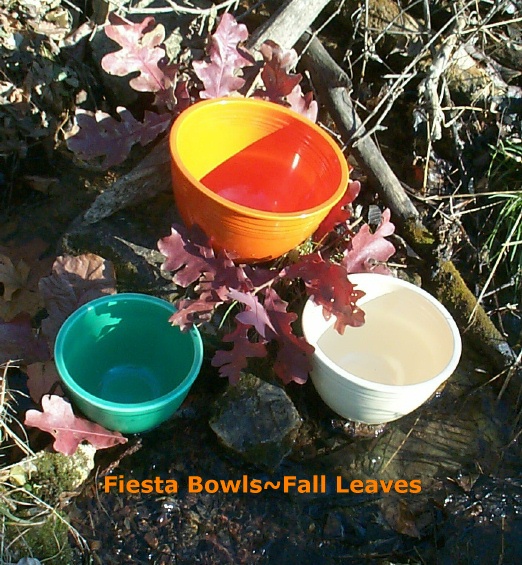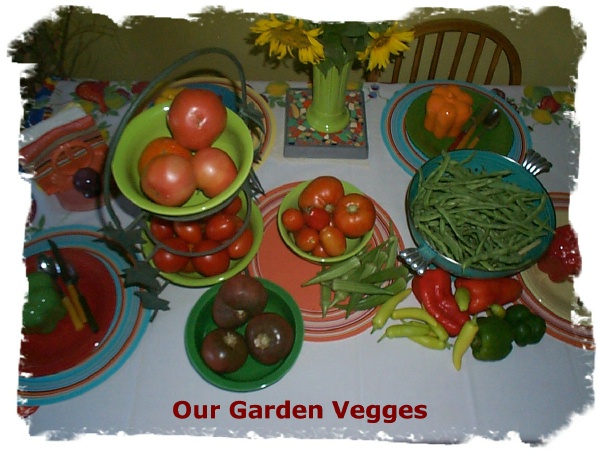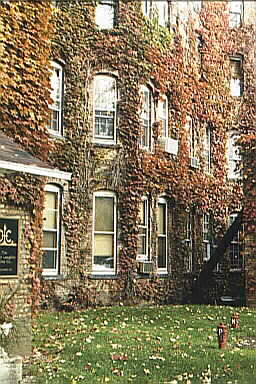|
|


 
HOMER LAUGHLIN CHINA COMPANY, 1877 to PRESENT..HISTORY
In 1872 the East Liverpool, Ohio City Council, foreseeing
the demise in popularity of yellow ware offered $5,000 to anyone that would agree to build a four kiln pottery producing white
ware.
Homer and Shakespeare Laughlin won that competition and proceeded to build a pottery in East Liverpool. They were
natives of the area being born on Beaver Creek near East Liverpool and the Ohio River. After the Civil War Homer and his brothers
had worked in the pottery industry in production and sales but were not expert in technical aspects of making ware.
They
accepted the Council's offer on September 1, 1873, broke ground for the plant on October 1 and opened for production one year
later on September 1, 1874. The plant with only two kilns struggled due to a lack of capital and lack of experience. White
ware had not been produced in the area before this time. It is said that the first batch of ware out of the kilns was cups
and that when the ware cooled all the handles fell off. Undaunted they persevered, calling themselves, "The Ohio Valley
Pottery" and "Laughlin Bros. Pottery". By 1874 they had 100 employees. Their work finally paid off when in
1876 they were awarded a medal for best white ware at the Centennial Exposition in Philadelphia, Pennsylvania. They were now
established as a quality producer in the market.
In 1877 Homer bought his brothers share of the company and renamed the
business "Homer Laughlin". In 1896 it was renamed "The Homer Laughlin China Company".
At this time
there was stiff competition with European and especially English China. The public perceived that the American ware, which
was more expensive was of lesser quality. Many potteries disguised their ware with marks reminiscent of English marks or named
their ware "Royal" to give the connotation of English ware. Homer Laughlin however, designed a mark that showed
the American Eagle on top of the British Lion. He wanted to show his confidence in the American ware.
Homer Laughlin was
aware of the conditions of his employees but safety standards were non-existent in industry at this time.The hazards of the
job were many, mostly from the inhalation of the dusts associated with the production of the ware. In 1877 he was paying his
employees more than their European or Asian counterparts. A skilled worker earned $2.33/day, an unskilled man $1.29/day, boys
0.82c/day and women and girls 0.75c/day. In 1880 he took 300 of his workers and their families by chartered train to Pittsburgh,
Pennsylvania for an exposition in the afternoon and the opera in the evening. Laughlin was mindful of his workers and saw
quality ion them. In 1880 Homer hired W.E. Wells as bookkeeper. He would eventually become the general manager and today his
descendants are still manage the company. He hired the first female secretary in 1888. Later in the companies history the
plant would include a recreational park.
Throughout the 1880's Homer Laughlin produced a variety of ware, mostly of a
basic white which could be used in hotels and other public institutions. Today many former Homer Laughlin workers can still
recognize the ware by style and quality wherever they may be in a hotel or restaurant throughout the country and even the
world. In 1886 he had truly mad what could be termed genuine American china. After a demonstration of its translucence and
vitreous qualities Jere Simms editor of the local newspaper said, "It is no longer a question of doubt that the finest,
thinnest and most translucent of china can be produced in America."
In 1897 Homer retired from the business to pursue
business interests in California. Wells, Louis, Marcus and Charles Aaron purchased interests in the company with Louis Aaron
as president and Wells as secretary and general manager. they decided that they needed to expand. In 1899 they built a new
plant east of the original pottery (plant # 2). Two years later they built plant # 3 beside plant # 2. They also traded the
original plant for another in the East End. After this expansion there were 32 kilns. Still unsatisfied and prompted by the
extreme growth in the demand for their wares they wanted to expand again. However, there was no available suitable land in
the East End of East Liverpool, therefore they pursued the purchase of a 3 mile tract of land in a small community that would
become known as Newell across the Ohio River in West Virginia. The location had access to fuel, railroad and river transportation.
Forming the North American Manufacturing Company to develop the property into a usable industrial site, the Homer Laughlin
company set about developing what until this time was a relatively inaccessible area of the West Virginia panhandle. The only
way to get to the property from Ohio was by ferry. By 1904 they had begun construction of a metal suspension bridge. Now called
the Newell Bridge it is still in operation as a toll bridge across the river. The first traffic moved across on July 4, 1905.
Newell grew rapidly from a small community of but a few homes to a prospering community with 130 additional homes by December
1907.
The plant, at that time the largest in the World, covered 10 acres, extended 700 feet along the riverbank. Standing
five stories high it had a total floor space of 15 acres.. Connected with the plant to the south was a 100 acre park with
a spring-fed stream, lack, zoo, formal garden and outdoor theater. The park, the idea of George Washington Clarke, a great
innovative salesman for the company. He spent much of his time and money on the park. He died in 1911 not long after the park
was built. With the addition of the new plant, in January 1907, there were 62 kilns and 48 decorating kilns capable of producing
300,000 pieces of ware per day.
In 1914 they added plant # 5, with 16 kilns, just to the north of plant # 4, the Newell
plant. By 1919-1920 they were ready to expand again. The industry was changing greatly at this time. New technologies for
better and more efficient production required the introduction of science and scientists into the business. Laughlin's hired
Albert Victor Bleininger, a scientist in ceramics.Bleininger would remain with the company until his death in 1946. His first
task was to build plant # 6. This plant was built across the valley to the south of plants # 4 and was the largest pottery
ever constructed in the world. It was to be a leader in the worldwide manufacturing of ceramics. The plant was state-of-the-art.
A major innovation was the construction of tunnel kilns. The tunnel kilns unlike the bottle kilns were of continuous operation.
the plant also had other technological advantages, streamlining the process of making the ware. The plant was 290 feet wide,
800 feet long with a basement 80 feet by 800feet where the clay, flint and feldspar were mixed.
1n 1927 they built plant
# 7 and replaced the bottle kilns in plants # 4 and # 5 with tunnel kilns. The three older plants in East Liverpool were soon
obsolete and were abandoned in 1929. To replace them, in 1928, Laughlin's built plant # 8 just south of plant # 6. This new
plant was 1,200 feet long and 300 feet wide and employed 900 people, equal to the combined numbers at plants # 6 and # 7.
At peak employment The Homer Laughlin China Company employed 3,500 people.
In 1927 they hired one of the worlds foremost
ceramists, Frederick Hurten Rhead. Rhead would stay with the company until his death in 1942. Rhead's first job was to update
the catalogue, most of which had been in production for decades. The newest ware was called Yellowstone and was a cream, light-yellow.
Introduced in 1926 it was advertised as, "possessing a warmth of tone that appeals to many persons of good taste more
strongly than the dead white body that has ruled the market for so many years". he slowly changed the product over a
space of several years. In 1935 he created Fiesta ware which would become the companies most popular and most collected line
of Homer Laughlin China. Fiesta was discontinued in 1959, replaced with Fiesta Ironstone which was discontinued in 1973. Fiesta
ware with new colors was reintroduced in 1986 to celebrate to celebrate its 50th anniversary. Rhea also created Harlequin
which was the Woolworth Companies biggest seller. It was reintroduced into the line in 1979 to celebrate Homer Laughlin's
Centennial.
Peak production for the company was in 1948 when they produced 10,129,449 dishes.
In 1959 plant # 6 was
adapted to produce heavy vitreous ware for restaurants. Hundreds of restaurants across the country now use Laughlin restaurant
ware, including the Marriott Hotel chain.
In 1930 W.E. Wells retired from the company. His son, Joseph Wells succeeded
him. In 1960 his son Joseph Wells Jr. became general manager and his son Joseph Wells III executive vice-president.In 1986
Joseph Wells III would become general manager. In 1911 Marcus Aaron took over as president of the board from his father, Louis
Aaron. In 1940 Marcus Lester Aaron becomes president retiring in 1989 after 65 years of service. His son Marcus Aaron II would
succeed him.
The Homer Laughlin China Company is still, today, the U.S.A's largest producer of china. Some of the plants
have been abandoned and closed but the company still operates at the Newell, West Virginia site.

|
 |
